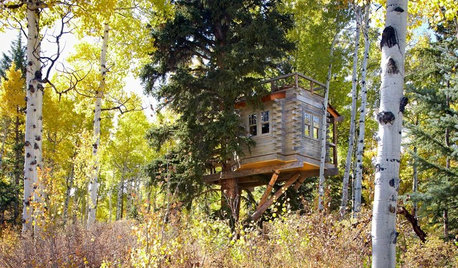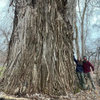How do I save my trees from these pests?
jlc212
10 years ago
Related Stories

GARDENING GUIDESTree Care: Common Tree Diseases and What to Do About Them
Learn to recognize trees that may be affected by diseases or pests so you can quickly take action
Full Story
FRANK LLOYD WRIGHTStep Inside a Frank Lloyd Wright House Saved From Demolition
The historic Phoenix property is now part of the architect’s school at Taliesin, where it will be used as a design lab
Full Story
ARCHITECTUREEnergy-Saving Ideas From 3 Affordable Green-Built Houses
Get lessons in budget-friendly green building from design competition winners in New York state
Full Story
INSPIRING GARDENSFrom Concrete Lot to Gracious Organic Garden in Seattle
Plants, pests and even weeds have a place in this landscape, which offers an edible bounty and a feast for the eyes
Full Story
GARDENING AND LANDSCAPINGOutdoor Design: Save that Tree!
Have Your Deck and Big Tree, Too — Build Around it for an Exceptional Living Space
Full Story
FUN HOUZZEverything I Need to Know About Decorating I Learned from Downton Abbey
Mind your manors with these 10 decorating tips from the PBS series, returning on January 5
Full Story
TREE HOUSESSwaying From Sleepovers to Dinner Parties in a Colorado Tree House
Folks of all ages have it made in the shade in this fun little house, thanks to electricity, a kitchenette and a rooftop deck
Full Story
TRAVEL BY DESIGN11 Amazing Home-Away-From-Home Tree Houses Around the World
Go climb a tree — and spend the night. Tree house hotels and lodges are booming as exotic vacation alternatives
Full Story
HOUZZ TOURSMy Houzz: A Reclaimed Wood House Rises From the Trees
Scorched siding, thoughtfully repurposed furnishings and a connection to both family and nature shine in this designer's new build
Full Story
MODERN ARCHITECTUREKeep Your Big Windows — and Save Birds Too
Reduce bird strikes on windows with everything from architectural solutions to a new high-tech glass from Germany
Full StoryMore Discussions









ken_adrian Adrian MI cold Z5
strobiculate
Related Professionals
Glendora Landscape Architects & Landscape Designers · Rossville Landscape Architects & Landscape Designers · Anderson Landscape Contractors · Hilo Landscape Contractors · Midland Landscape Contractors · Rosemont Siding & Exteriors · Destin Siding & Exteriors · Gurnee Siding & Exteriors · Lenexa Siding & Exteriors · New Lenox Siding & Exteriors · Frisco Decks, Patios & Outdoor Enclosures · Hyattsville Decks, Patios & Outdoor Enclosures · Salisbury Decks, Patios & Outdoor Enclosures · West Palm Beach Decks, Patios & Outdoor Enclosures · Santa Monica Decks, Patios & Outdoor Enclosuressaccharum
mulchmama
mulchmama
saccharum
ken_adrian Adrian MI cold Z5
saccharum
rhizo_1 (North AL) zone 7
jlc212Original Author
botann
rhizo_1 (North AL) zone 7